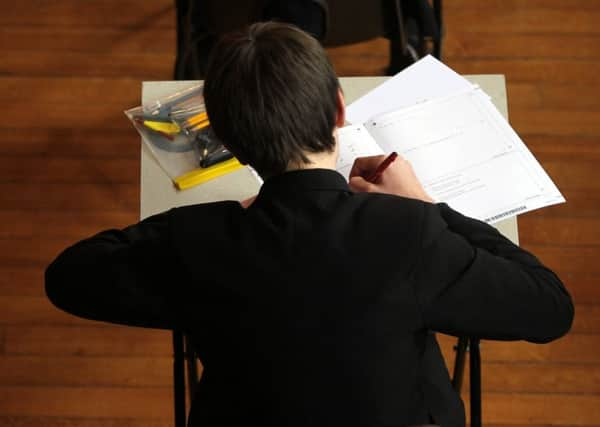‘Students should be proud’ as Leeds’ school league tables published


Across Leeds, pupils’ progress is now exactly in line with the national average. Attainment is slightly higher.
And while two of the city’s schools have been deemed as under-performing, two more have been highlighted as excelling.
Advertisement
Hide AdAdvertisement
Hide AdLeeds is now ranked 65th out of 151 authorities. And while there is always more that can be done, executives have said, students have reason to be proud.
“Exams can be a difficult and stressful time for young people, but with the help and support of their schools and families, students in Leeds have done themselves and the city proud with these results,” said Coun Jonathan Pryor, executive for learning, at Leeds City Council.
“As a city we know there is more to do to improve attainment at all levels, and we continue to work closely with schools and other learning providers to make sure that all children and young people are supported to achieve their potential.”
The league tables, which look at measures over progress, attainment, and the number of pupils achieving higher grade GCSEs, examine every secondary school in England.
Advertisement
Hide AdAdvertisement
Hide AdIn Leeds, Allerton High School has been highlighted as having the best Progress Score, at 0.68 compared to a national average of -0.02. The Morley Academy, with a score of 0.51, also tops the list.
Nationwide, over a quarter-of-a-million pupils are now taught in schools below the minimum standard. Two secondaries in Leeds have been highlighted as not meeting Government’s ‘floor standards’, measured by pupils’ scores across eight GCSEs. The Bishop Young C of E Academy, in Seacroft, and John Smeaton Academy, both make the list.
Paul Cooper, principal at the former, said there have been “significant” improvements at the school since it was re-brokered into the Abbey Multi-Academy Trust in 2017, adding that external reports are now highlighting progress and strong leadership. “We are proud that attendance has improved by three per cent in the last year, exclusions are amongst the lowest in the city during this academic year, and students are now making good progress,” he added.
School standards minister Nick Gibb said: “Making sure that all pupils, regardless of their background, are able to fulfil their potential is one of this Government’s key priorities and these results show that more pupils across the country are doing just that.”
Advertisement
Hide AdAdvertisement
Hide Ad“It’s been clear for some time that standards are rising in our schools and today’s data underlines the role academies and free schools are playing in that improvement, with progress above the national average and impressive outcomes for disadvantaged pupils”, he added.
School leaders have warned that performance tables are “long past their sell-by date”, urging parents to look beyond the data when it comes to judging education standards.
Geoff Barton, general secretary of the Association of School and College Leaders, argued that the headline measure of Progress 8, used to analyse performance, “penalises” schools with a high proportion of disadvantaged children.
“Performance tables can never tell the full story of a school and we urge parents and governors not to place too much weight on them,” he said.
Advertisement
Hide AdAdvertisement
Hide Ad“The effect of this is to stigmatise these schools, making it more difficult to recruit headteachers and teachers and demoralising pupils, parents and communities.”
Nansi Ellis, assistant general secretary of the National Education Union, added that the system was “flawed”.
“School performance tables are not an accurate or reliable indicator of school effectiveness,” she warned. “Using the grade a child achieved in primary school in two subjects is not a safe starting point against which to assess their attainment five years later. Nor does it take into account all the additional problems and factors that affect pupil attainment.
“The tables can also disadvantage schools in economically and socially deprived areas.”